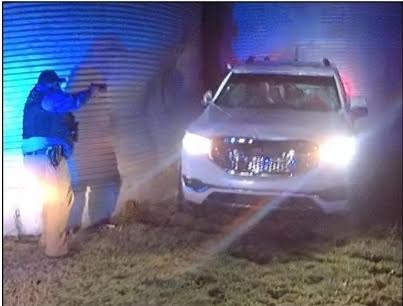Edmonson Water district gets grant to help with sediment problem
Published 9:45 am Tuesday, August 8, 2017
The Edmonson County Water District received a $10,000 grant from the Nature Conservancy to alleviate the financial burden of cleaning the district’s water intake screens as the failure of Lock and Dam No. 6 causes a faster buildup of sediment.
Lock and Dam No. 6 on the Green River outside Brownsville failed in November, causing a heavier flow of sediment to bombard the screens, which are just downstream.
Trending
Tony Sanders, manager of the water district, said this made it necessary to hire Green River Commercial Diving to clear away the sediment in April, only six months after the last time the screens had been cleaned.
The $3,200 expense had not been budgeted, he said.
“It was a cost we really hadn’t anticipated, especially because we did it last fall,” he said.
Cleaning the intake screens is not typically done more than once in a year, Sanders said.
Sanders appreciates the financial help the Nature Conservancy has offered, which is intended to give the water district some funds to fall back on as it waits for a study of the impact removing Lock and Dam No. 5 would have on the water district’s intake screens.
“I am glad that the Nature Conservancy got involved and decided to help us,” he said.
Trending
The water district originally intended to raise the intake screens, thus removing them from the main flow of sediment created when the dam failed, but decided to hold off on taking any action until after the U.S. Army Corps of Engineers conducts a study of the impact removing Lock and Dam No. 5, located about 14 miles downstream, would have on the intake screens, Sanders said.
“It at least gives us a little time to see what’s going on, to see if the sediment issue is getting better or worse,” he said. “It’s still sort of a waiting game. Hopefully we don’t have to do any modifications, but you never know.”
Michael Hensley, with the Nature Conservancy, which is collaborating with the Corps of Engineers on the study, said he met with Sanders and the water district board of directors in July to get a sense of the problems they were having in the wake of the dam’s failure and presented them with the grant opportunity within a week.
He said members of the board of directors were concerned about how often the water district would need to pay to have the screens cleaned.
The Nature Conservancy decided to help out because, as a nonprofit organization, it could provide financial help much sooner than a government agency could, Hensley said.
“There’s no way they could set up a grant and provide a check in a week,” he said, adding that there would be more bureaucracy to deal with if the water district had tried to go through a government agency.
“It gives them kind of a safety blanket of knowing they could have two more done and have our help,” he said.
The grant is expected to give the water district the ability to pay for an additional two cleanings, Hensley said.
Sanders said the water district plans to have the screens inspected and cleaned in October if no problems are spotted before then.
According to Sanders, the only way to tell if there’s sediment buildup on the screens is to “dive down there and inspect it.”
Mike Turner, an ecologist with the Corps of Engineers, said the study has already begun and should conclude in July 2018.






